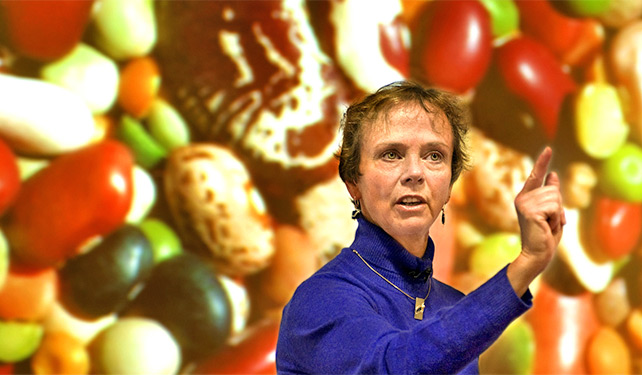Speaking at the Vic No-Till annual conference in Ballarat last week, Dr Clapperton said: "It's bad for you, it's bad for the environment, it's bad for the soil - it's bad for everything. "But some times we need it, I get that. Our goal should be not to need it. "Insecticides are some of our most toxic substances - they kill all insects, beneficial and pests - and insects are probably more manageable than many of our other pests. "Now with our technology we can put things between rows properly and grow mixed covers, we have some opportunities to look at this more. We are starting to understand the different insects and how they interact." Dr Clapperton is a freelance scientist and farmer, proving her science in her own fields.
"The farm helps me understand some of the problems farmers face," she said.
"And we need the yields to fund my research."
Her main message to farmers is they need to focus on building diversity of organisms within soils.
This stabilised the agro-ecosystem, she said.
"The point is we just don't know how much we can produce when we do that," she said. "I am absolutely confident we can produce enough food for our people."
Diversity made soils more drought and flood-resistant, and increased farmers' ability to produce quality, nutrient-rich foods, she said.
Farmers who had moved to no-till cropping needed to next focus on building the soil habitat through diversity in the agro-ecosystem.
"And the last step is to connect quality food that you are producing, in an environmentally sustainable way, to the consumer, and know that you are supplying Australians with quality and nutrient-dense food without cost to the environment," she said.
Dr Clapperton said farmers should aim to keep their soil undisturbed and "crawling" with bugs.
"You should see earthworms having sex. If you build it, they (soil organisms) will come," she said.
It was possible to change and improve soil types with different management practices, she said.
"Twenty years ago, we did not think you could change soil types but it has been proven possible," Dr Clapperton said.
"One thing I have learnt over the years is that predator-prey relationships are just as important to drive mineralisation of the soil. It is not just all about the microbiology - the predators are what turns the soil over."
No-till practices help improve structures within soils that create a good environment for predator-prey relationships.
"Soil organic matter is the food source," she said.
She said it was still early days for no-till practices and there was much to be learned, but the opportunities to improve productivity and the environment were exciting.
Mulch was a terrific way to insulate to maintain a more stable soil temperatures. This promoted soil biology health.
"Plants grow best when roots are in that 15-25 degree Celsius range," Dr Clapperton said.
Plant coverage also helped stabilise the soil temperatures.
Counter-intuitively, dense green plant coverage led to less water use than sparse coverage.
Dr Clapperton said plants with a large root mass were better for soils.
She advocated growing several species at once, with different root depths, in cropping rotations, as cover crops or within forage pastures.
"The roots are what drive everything," she said. "If you don't have good structure in soil, you have to use more fertilisers, because the plant can't compete with the microbes (that get out of balance in soils with poor structure)."
Source: Weekly Times, 29 July 2013
http://www.weeklytimesnow.com.au/article/2013/07/29/577288_grain-and-ha…
Quivira Coalition Conference, Dr. Jill Clapperton - Soil, 2012
http://www.youtube.com/watch?v=o6daE2sYegg

- Login om te reageren
